Why do we love hot springs so much? Is it just a throwback to all those millennia that our ancestors spent huddling in cold caves?
Having a free source of heat must be part of that ancient attraction, as well as a sense of awe at the power of nature, and the reputed healing power of many hot springs. And what a bonus to relax into the hot water in those places where it’s possible.
Whatever the reason, hot springs remain one of the most popular visitor attractions in any destination. Here is a list of some of the best hot springs in the world to enjoy.
Banff Upper Hot Springs, Canada
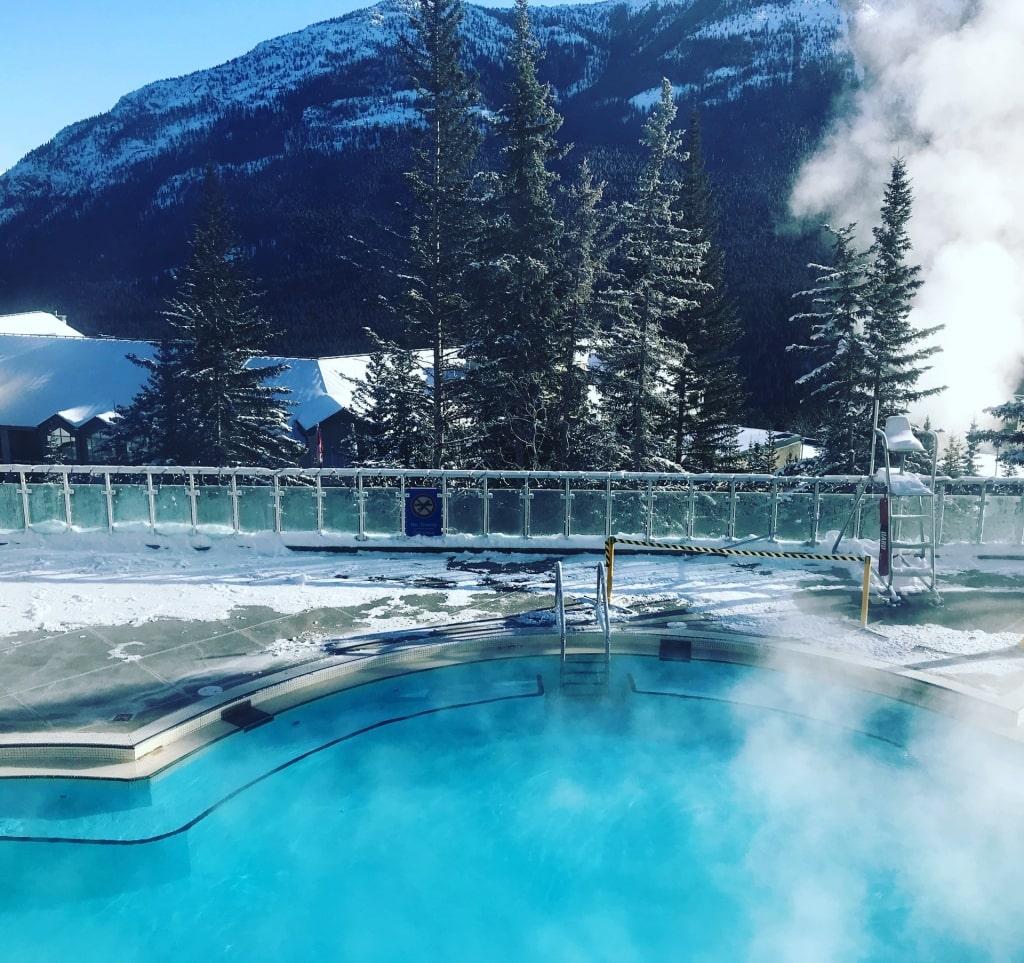
Banff Upper Hot Springs, Canada
Enjoying a reputation as one of the best hot springs in North America, these healing waters have been used for millennia. When the trans-Canada railway came through in the early 1880s, their popularity led to the birth of Banff National Park, one of the best national parks in the world.
The springs are at an altitude of 5,000 feet, near the top of Sulphur Mountain. The bathhouse itself is a historic building dating to 1886.
The pure natural mineral water is maintained at around 100ºF. In the outdoor pool, you can soak while enjoying views of the snow-peaked Rocky Mountains that Canada is known for.
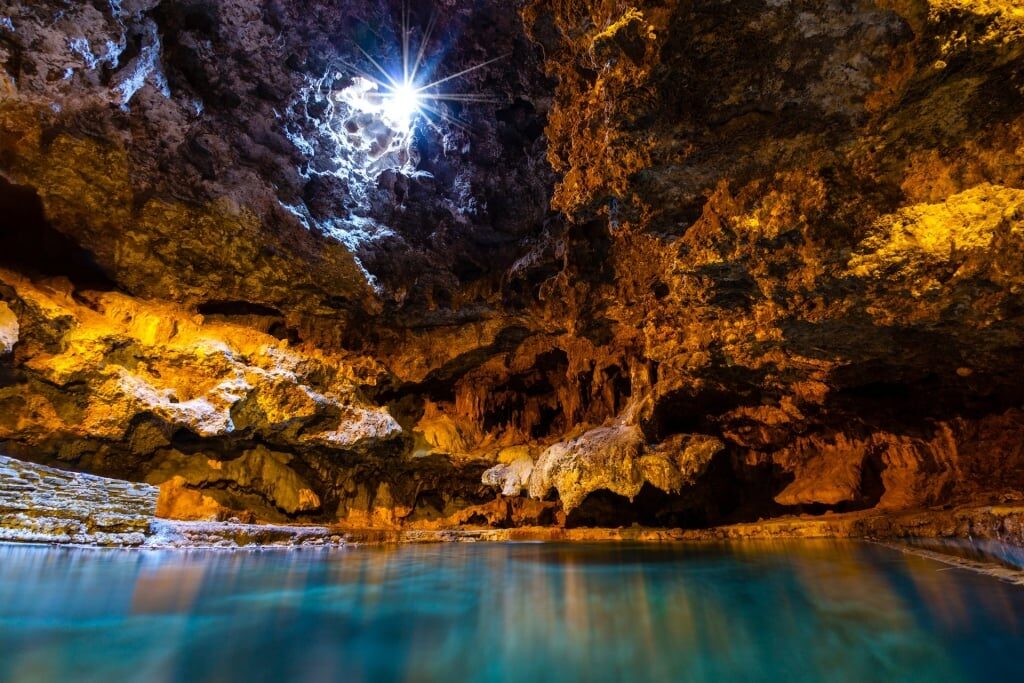
Cave and Basin National Historic Site, Canada
Nearby is the Cave and Basin National Historic Site, where you can explore the indigenous history of the springs. The interpretive center has a replica of the original 19th-century bathhouse here and the restored swimming pool from 1916.
Uunartoq Hot Springs, Greenland
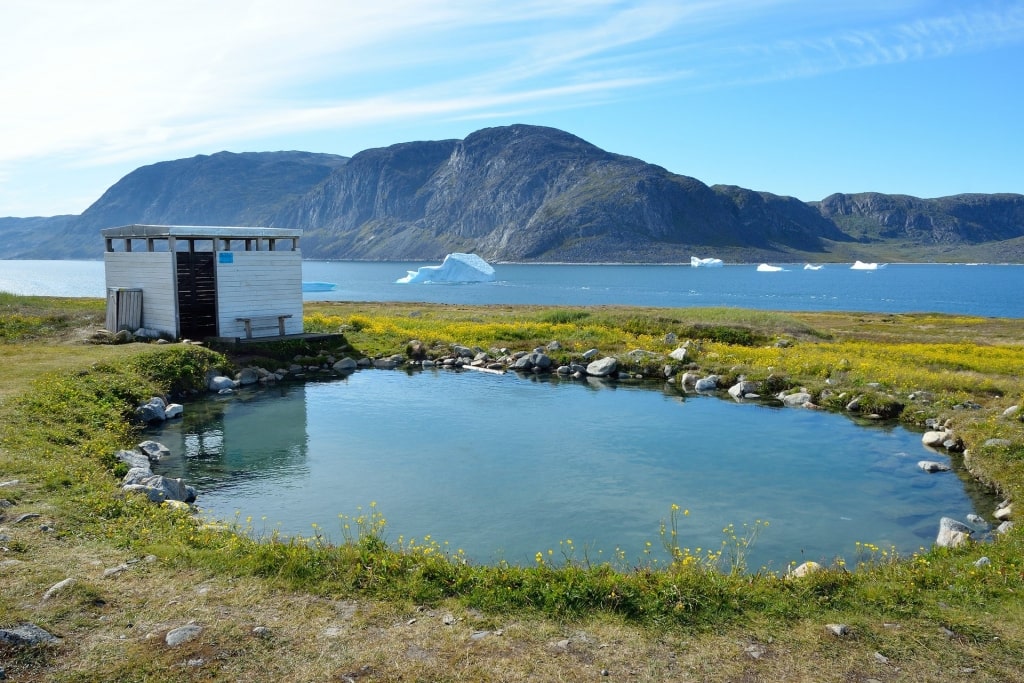
Uunartoq Hot Springs, Greenland
On a tiny island, 350 miles north of the Arctic Circle, you will find the best hot springs in Greenland. No surprise then that its name, Uunartoq Qeqertaq, means “hot island”.
Getting there, your boat may well weave around icebergs (and whales) but the spring water is a lovely 100ºF. It flows into delightful natural pools with a soaring view of some of the most beautiful mountains in the world.
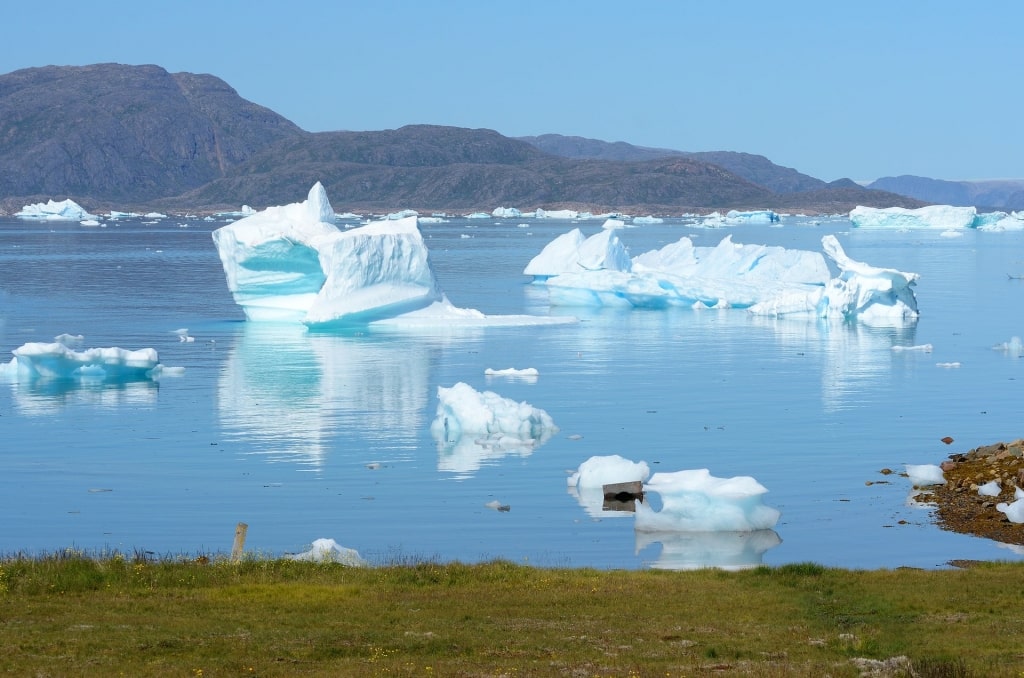
Greenland
The hot water comes from deep underground, so there is no sulfur smell. The dark sandy bottom also leaves the water very clear.
The changing huts for the main circular pool are the only major structure on the island. However, the Inuit have known and used its waters for centuries.
A 12th-century Benedictine convent on Uunartoq fjord also promoted the thermal waters to heal the sick. A major archeological find in the monastic grounds was an early Norse sun compass.
Mývatn Nature Baths, Iceland

Mývatn Nature Baths, Iceland
Northern Iceland’s alternative to the famous Blue Lagoon is the hot pools and steam baths at Mývatn. These large pools are heated by geothermal water from the depths of the earth.
Mývatn is a short drive from Akureyri, Iceland’s “Capital of the North”. The area around Mývatn is a nature reserve, with a setting as pretty as that sounds.
Rich in lakes and forest providing an exciting Icelandic nature experience, it’s paradise for birdwatchers keen on marsh birds and ducks.

Mývatn Nature Baths, Iceland
The main bath is a large circular lagoon, made turquoise by the silica in the water—just like the Blue Lagoon. The silica, sulfur, and other minerals in the water are excellent for your skin.
Two steam baths offer a temperature of 122°F and 100% humidity, so you may not want to linger too long in them. A hot tub is another option if you don’t have an Icelandic constitution.
Hells of Beppu, Japan
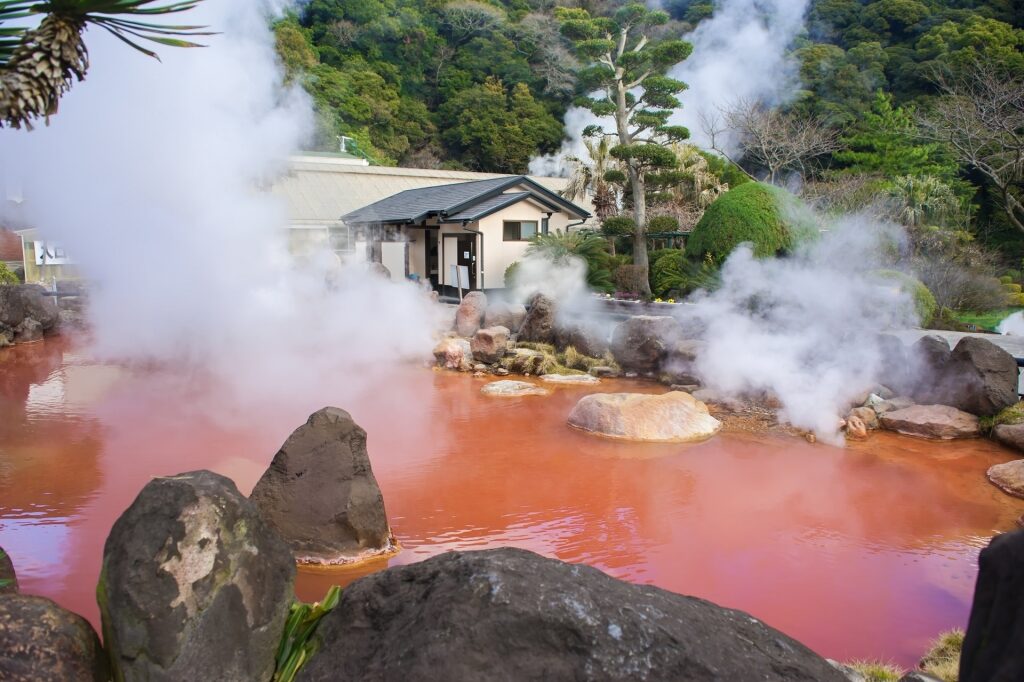
Hells of Beppu, Japan
With thousands of onsen (Japanese for “hot spring”), the Beppu region has been a spa destination for hundreds of years. You will find every style here, from shiny modern to traditional rustic.
Something a bit different is the so-called “Hells of Beppu”. This Japanese landmark is made up of seven outdoor hot springs. These are springs to admire for their variety, rather than to bathe in. At one, you can eat eggs boiled in the water. At another, you can drink the water—said to make you ten years younger.
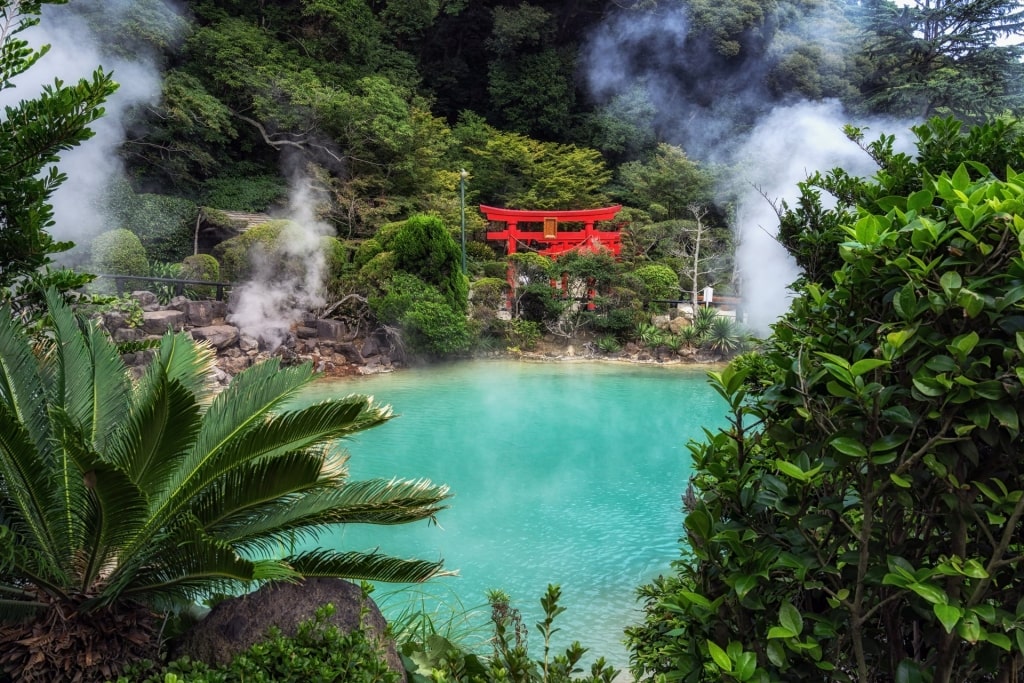
Hells of Beppu, Japan
Oniyama Jigoku (Jigoku means “Hell”) has dozens of crocodiles, raised in the thermal waters. Like any of us in a spa, they just laze around, but it’s still quite a sight.
After your visit, you will want to enjoy a session at one of the other onsens in Beppu. Perhaps a bath in hot volcanic sand, or a soak in a mud bath that Japan is known for.
Nea Kameni, Santorini, Greece
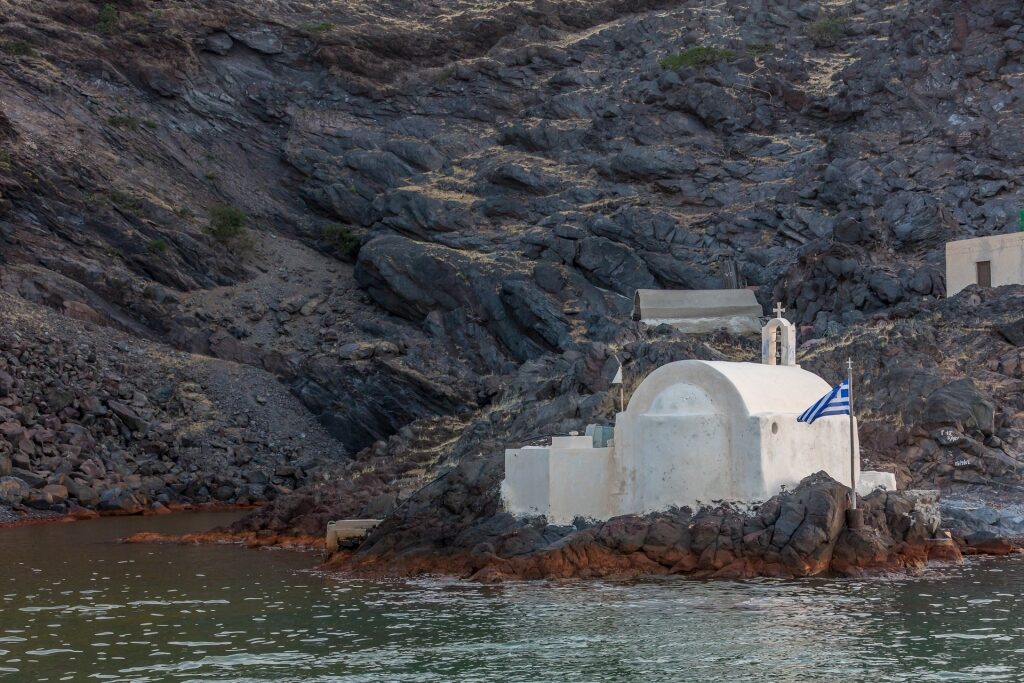
Nea Kameni in Santorini, Greece
The crescent-shaped caldera of Santorini is one of the most famous sights in the Aegean. At its center lie two islands, the larger of which is Nea Kameni, with a bubbling volcanic spring.
Reached by small boat from the “mainland” ports of Fira or Athinios, the island first formed after an eruption in 1866. It reached its current size after an eruption as recently as 1950.
The hot springs are the still-visible reminder of the volcano that created Santorini itself. They bubble into the sea, perhaps preventing another future eruption by literally letting off steam.
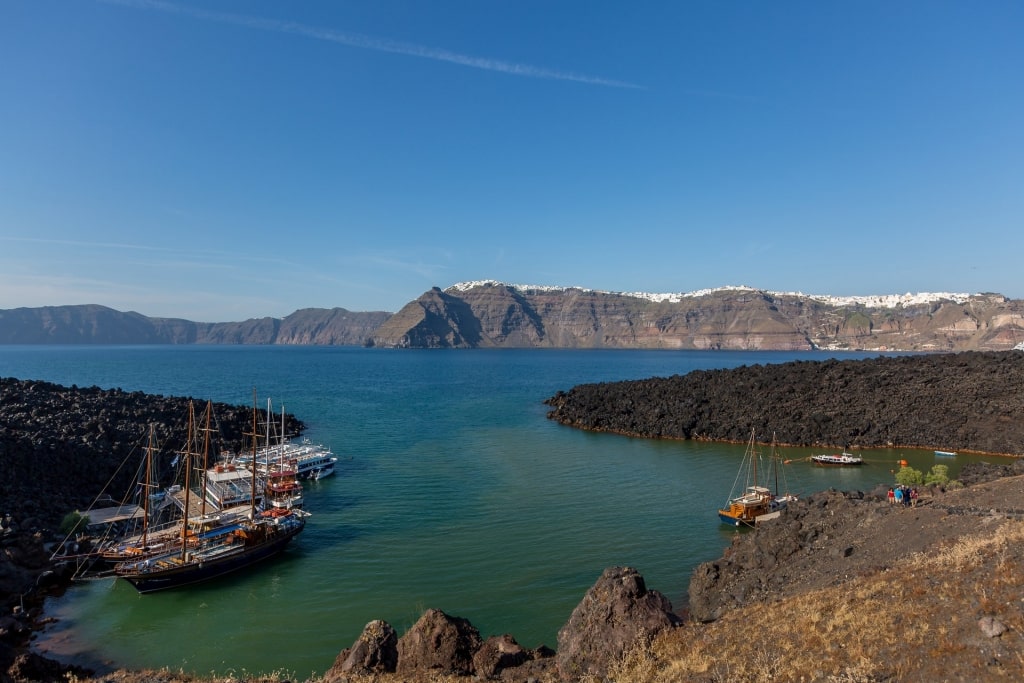
Nea Kameni in Santorini, Greece
Emptying into a small cove, they create a pool of mineral-rich waters with a whiff of sulfur. While not hot as such, the sea temperature is raised to a comfortable level for swimming.
If you walk around the island, you can also take a closer look at some active fumaroles. The terrain is very steep and, between the volcanic activity and Mediterranean sun, very hot.
Blue Lagoon, Iceland
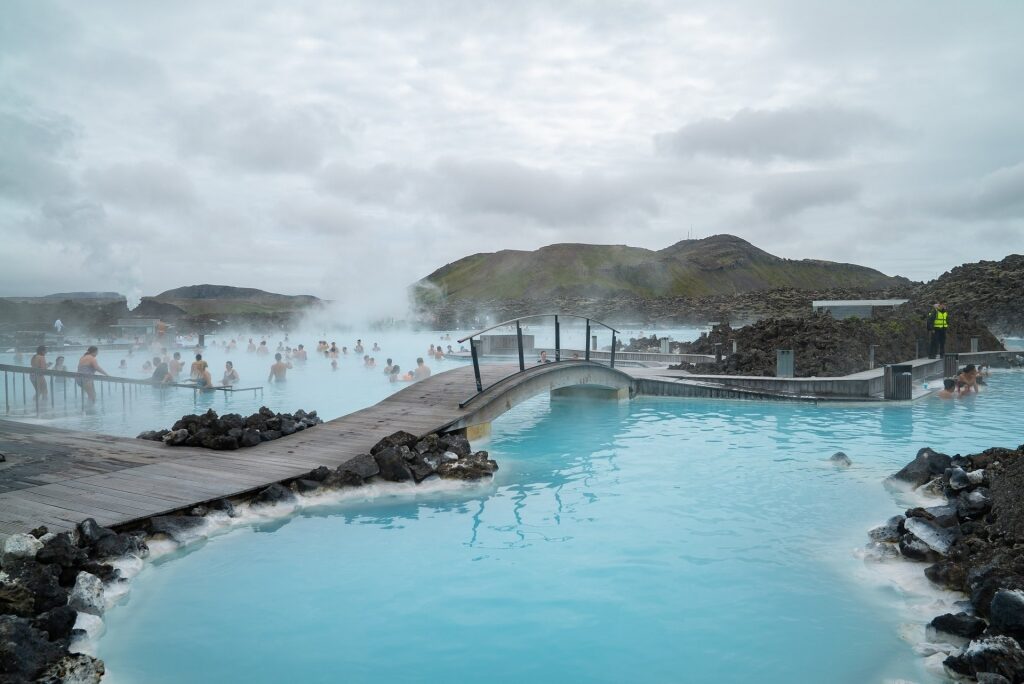
Blue Lagoon, Iceland
The famous Blue Lagoon is surprisingly close to Iceland’s Keflavík International Airport. With its vivid blue water, you can feel you have already flown somewhere otherworldly and exotic, making it one of the best hot springs in Iceland—and to many, one of the best hot springs in the world.
Surrounded by mossy black volcanic rock, the lagoon is a favorite with visitors as well as Icelanders. It was originally put on the map after a local man found it cured his psoriasis.
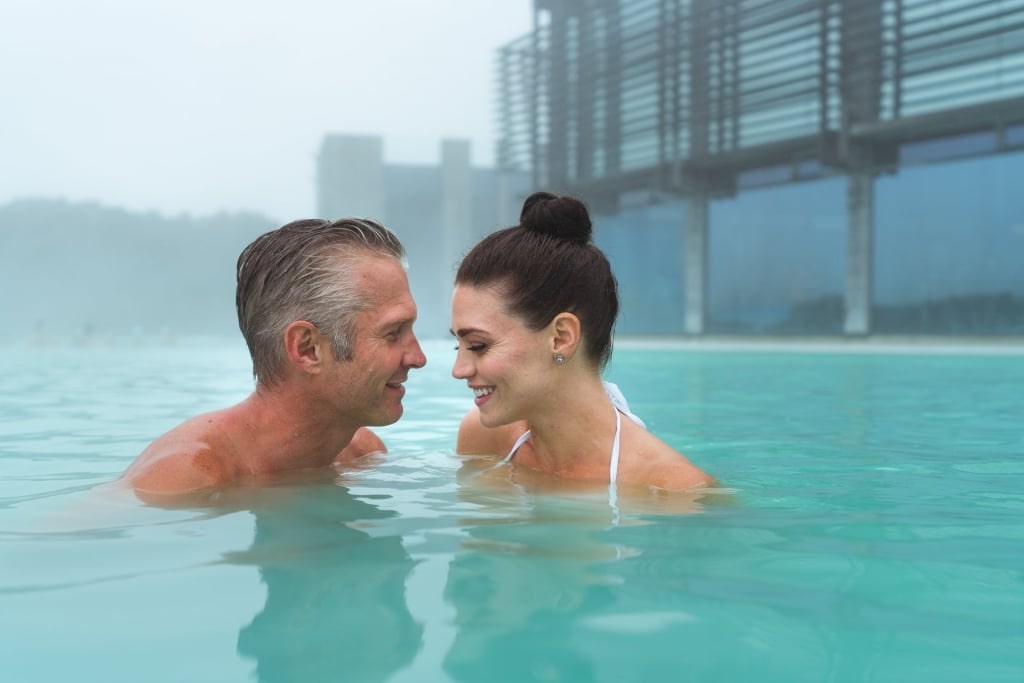
Blue Lagoon, Iceland
The water is actually the silica-rich run-off from Svartsengi geothermal power plant. Its blue color is the white silica reflecting the light, so at its brightest on a sunny day.
On dull winter days, the water may not look that blue. In compensation, you then have atmospheric steam rising off the surface and may see the Northern Lights.
Away from the busy public pool, there are private spa facilities available such as massages. Onsite restaurants include one specializing in Icelandic cuisine and another featuring health food options.
Hell’s Gate, New Zealand
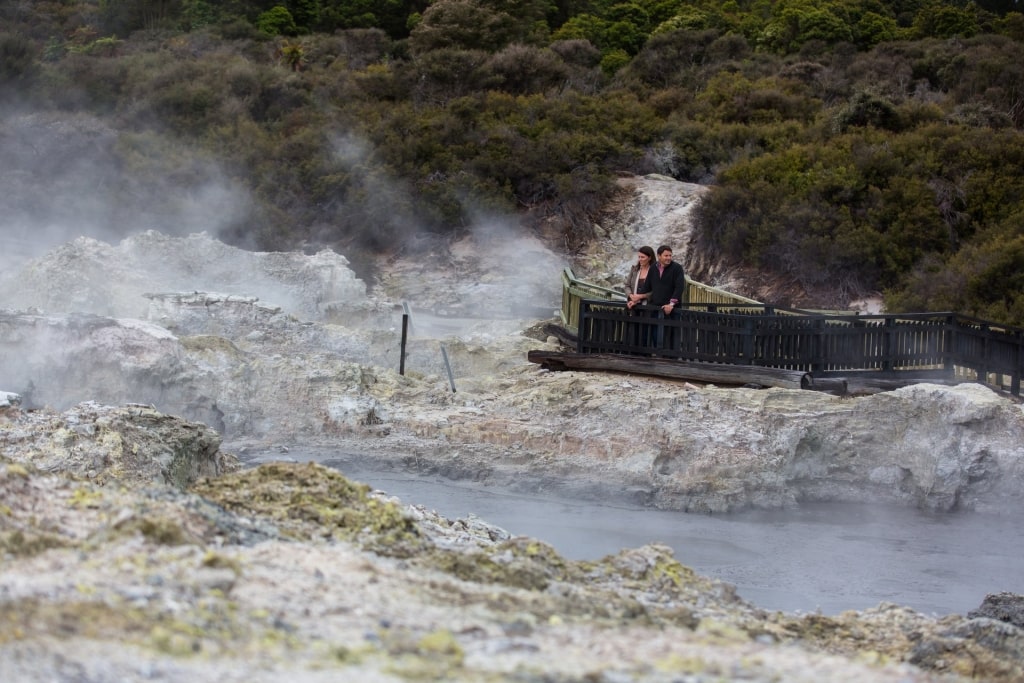
Hell’s Gate, New Zealand
Can playing in mud still bring out the inner child in you? If so, this hot spring on New Zealand’s North Island is one not to miss.
New Zealand sits on the so-called “Ring of Fire” that encircles the Pacific. Volcanic activity makes its presence felt here in geysers, thermal springs, and bubbling mud pools.
Hell’s Gate in Rotorua is the country’s only mud spa, used for centuries by the Māori for healing. Different types of mud—black, white and gray—treat different ailments, from rheumatism to simple exfoliation.
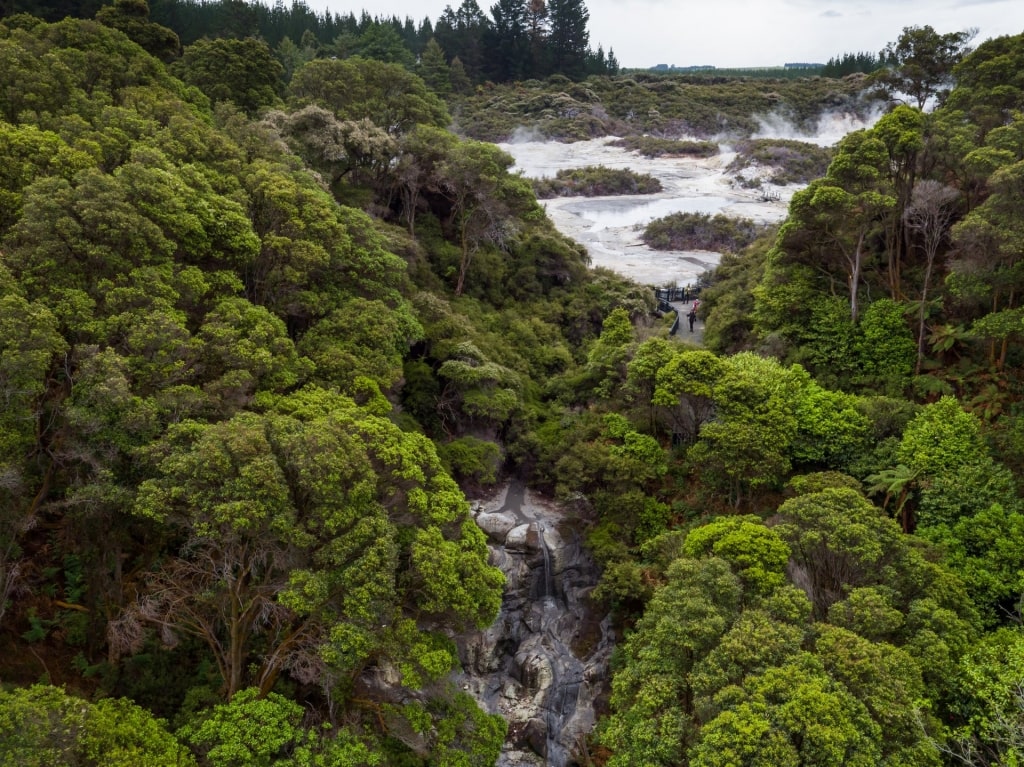
Hell’s Gate, New Zealand
As well as the outdoor mud bath, the spa has a geothermal pool. Cool down afterward in the picturesque natural waterfall, or a cold plunge pool.
Hell’s Gate is also a geothermal park where you can walk in the dramatic, steaming landscape. Crystallized sulfur, lakes of bubbling hot water and land corals are among the sights that make it one of the most beautiful places in New Zealand.
Geysir Hot Springs, Iceland
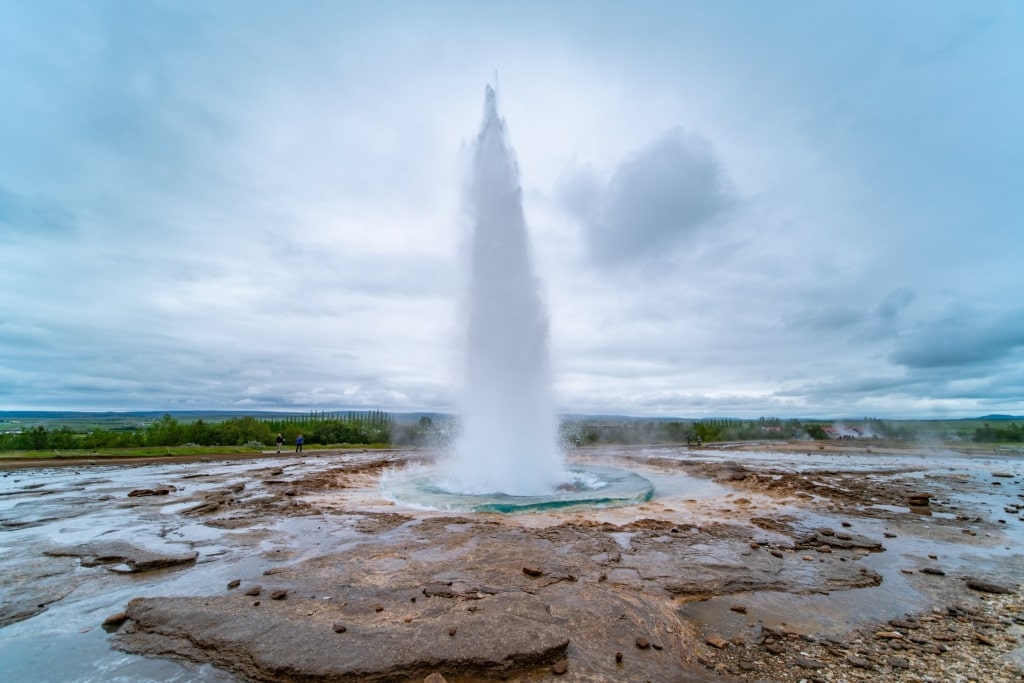
Geysir Hot Springs, Iceland
The geyser that gave its name to the phenomenon is a must-see on any visit to Iceland. Although Geysir itself now seldom erupts, the nearby Strokkur geyser still blows off steam every five minutes or so.
Geysir is on the “Golden Circle” route that takes in all the major attractions of southern Iceland. It’s within the geothermal Haukadalur (“Hawk Valley”) where geysers were first recorded around 1300.
Strokkur’s spout rises to 100 ft in the air, but Geysir itself has reached more than four times that height. Geysir—which means “gush” in Icelandic—is now active only a few times a year but remains the icon of one of the world’s most famous hot springs.
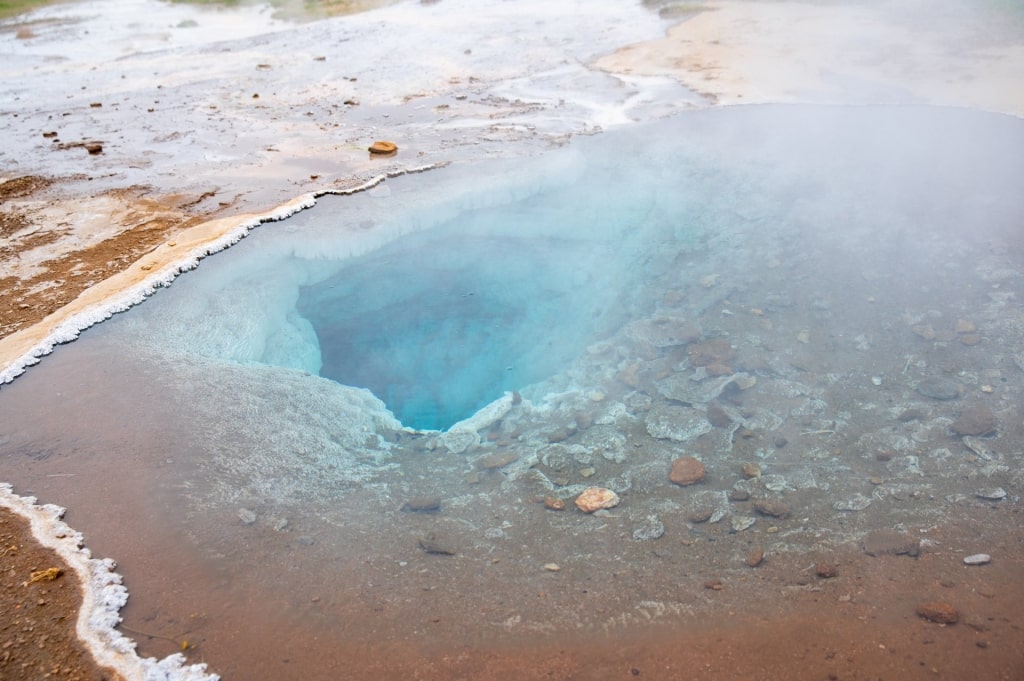
Blesi, Geysir Hot Springs, Iceland
As well as the geysers, you will also find sights such as Blesi, a hot spring with turquoise water. Find out more at the Geysir Center, where the natural history of the hot springs comes alive.
Owakudani Valley, Japan
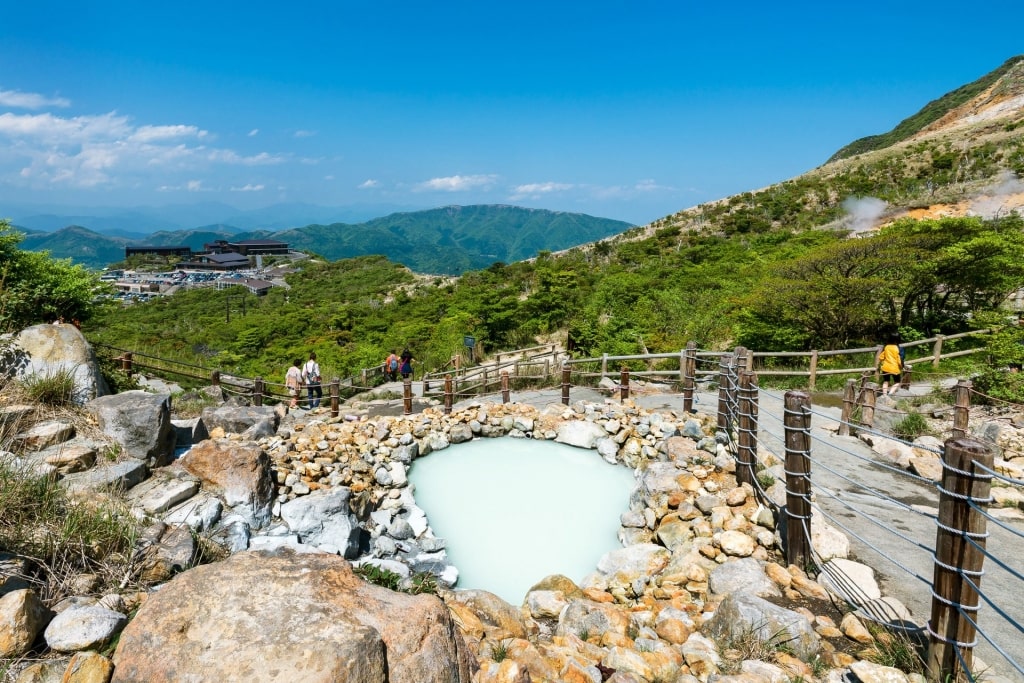
Owakudani Valley, Japan
Would you like to add seven years to your life? Then you’ll want to eat an egg boiled for an hour in the hot springs of Owakudani.
The springs were left after an eruption of volcanic Mount Hakone about 3,000 years ago. Owakudani (“Great Seething Valley”) was formed after the massive explosion collapsed the existing caldera and blocked a river.
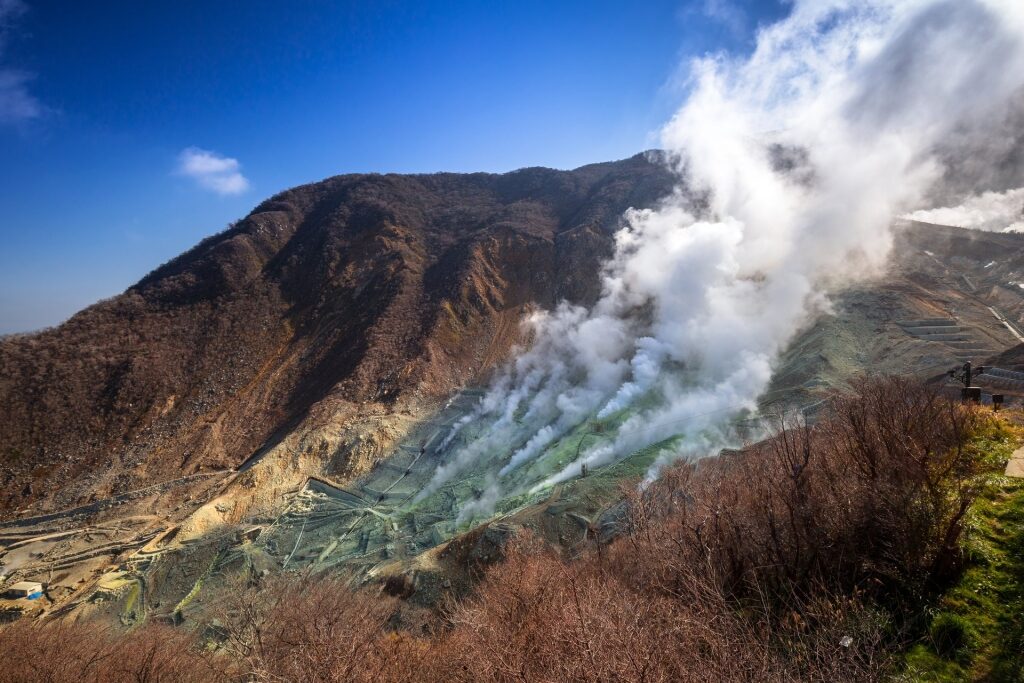
Owakudani Valley, Japan
One of the most beautiful places in Japan, the valley is a unique volcanic landscape with steaming vents and, of course, hot springs. Hiking trails are a popular way to explore its geothermal wonders.
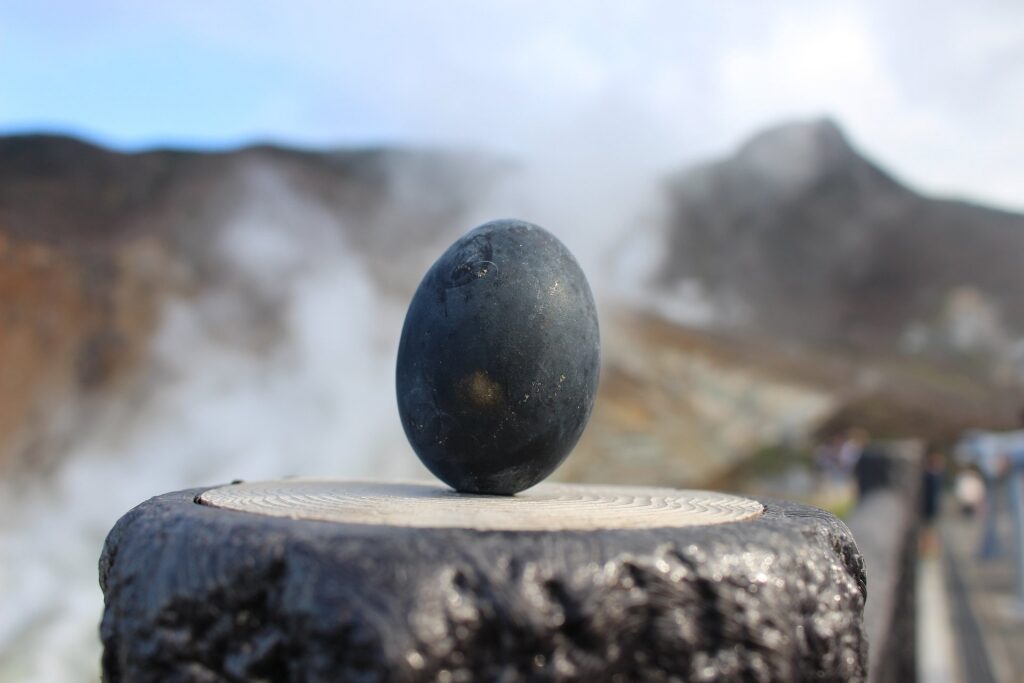
Kurotamago
At the end of one of the trails, you’ll find a pool where eggs are boiled in a pool and then steamed (they are also on sale elsewhere). Each kurotamago (“black egg”) takes its distinctive color from the sulfur and iron in the water.
Of course, the promise of longevity may just be a local legend. Eating more than two is not recommended, either.
Read: What to Eat in Japan
Parque Terra Nostra, Azores, Portugal
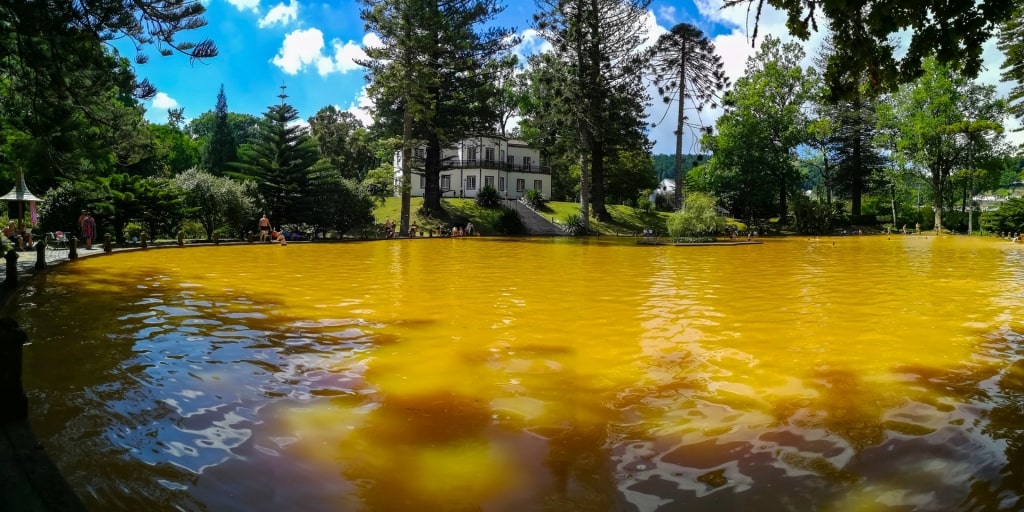
Parque Terra Nostra in Azores, Portugal
U.S. Consul Thomas Hickling founded the Terra Nostra Garden Botanical Park in 1775. That park—and its natural hot-water swimming pool—is now one of the major attractions in the Azores.
Just outside Ponta Delgada on the island of Sāo Miguel, the botanic garden holds a host of exotic plants. As well as many indigenous to the Azores, there are plants from countries as far apart as South Africa and China.
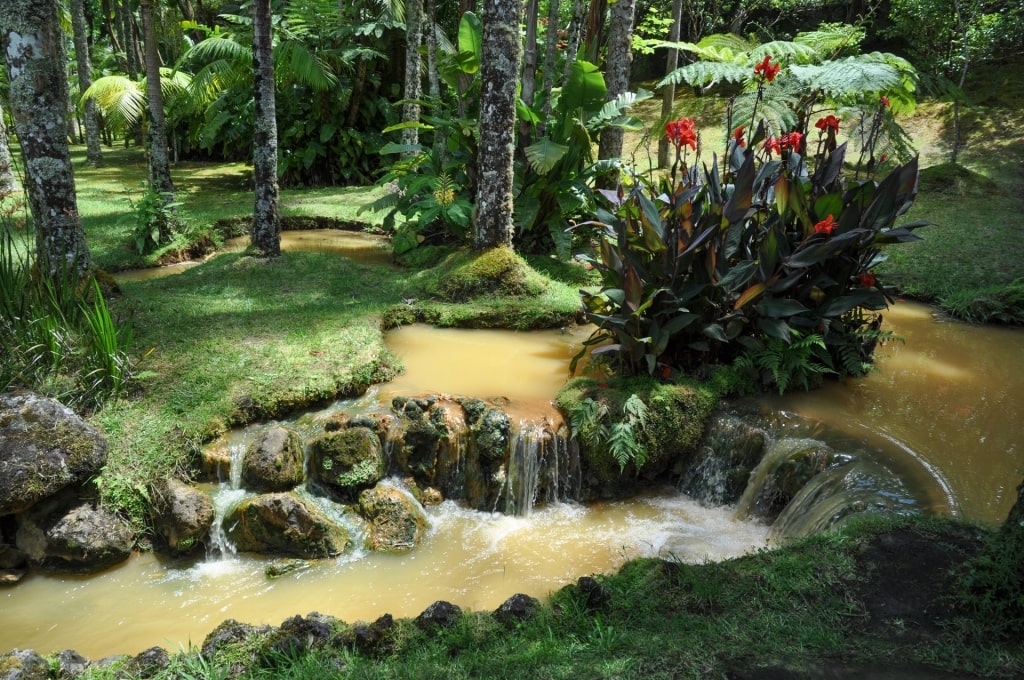
Parque Terra Nostra in Azores, Portugal
The geothermal hot pools at its heart are the reason for the garden’s existence. Their therapeutic qualities brought visitors, and Hickling added a small hut and some trees around them for shade and relaxation.
The main attraction is a huge thermal tank whose 100ºF water is stained orange with iron minerals. Be warned that it may stain your swimming costume if not rinsed out afterward in freshwater.
Chena Hot Springs, Fairbanks, Alaska
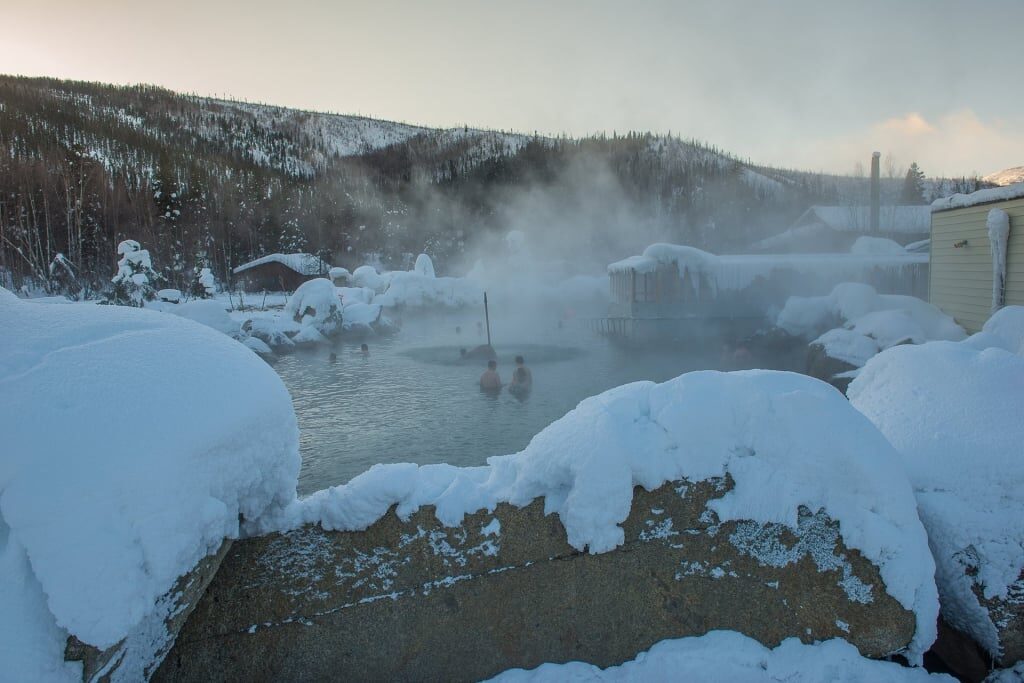
Chena Hot Springs in Fairbanks, Alaska
Discovered by gold miners in 1905, Chena Hot Springs sit just outside Fairbanks. As well as being Alaska’s largest city, Fairbanks is also its coldest, so the attraction of a thermal bath must have been immediate—especially to hard-working miners.
The first resort had been built in 1912, when reaching it took a week by stagecoach. Today, it has grown into a major attraction and now includes sights such as the Aurora Ice Museum.
The central feature, however, remains a large, 106ºF indoor pool. Outside, Rock Lake is designed for wading with a sandy bottom and a boulder surround to enhance the natural feeling.
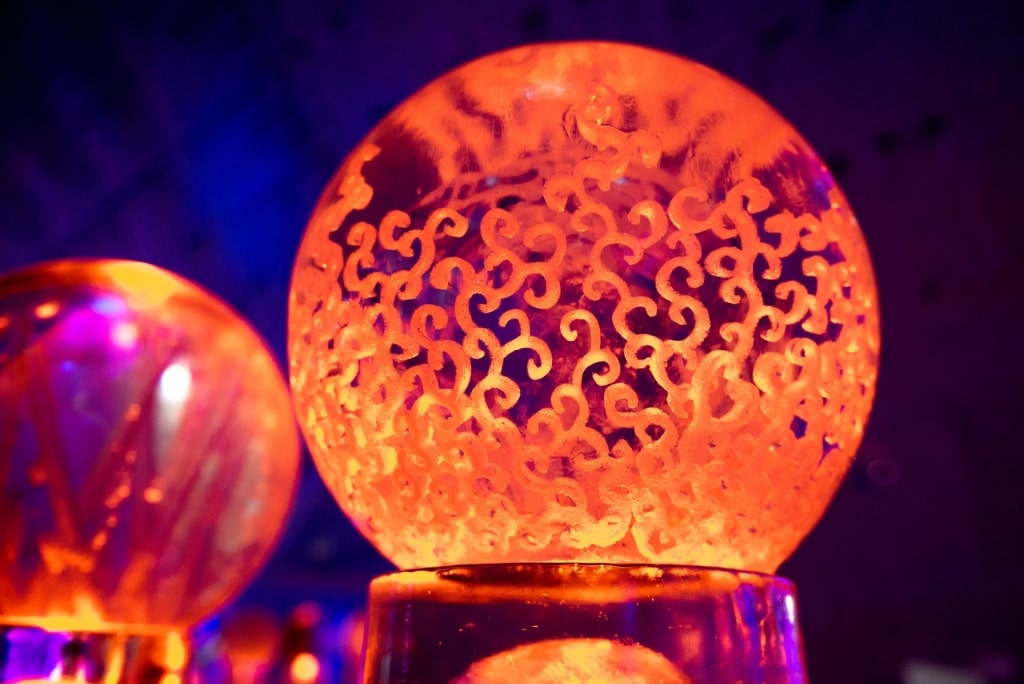
Ice Museum in Fairbanks, Alaska
The ice museum is the world’s largest, open all year. It showcases ice sculptures and offers martinis in its Ice Bar.
Take a tour to find out more about the geothermal activity in this area. Or hop on a dog sled ride for a true Alaskan adventure.
Frying Pan Lake, New Zealand
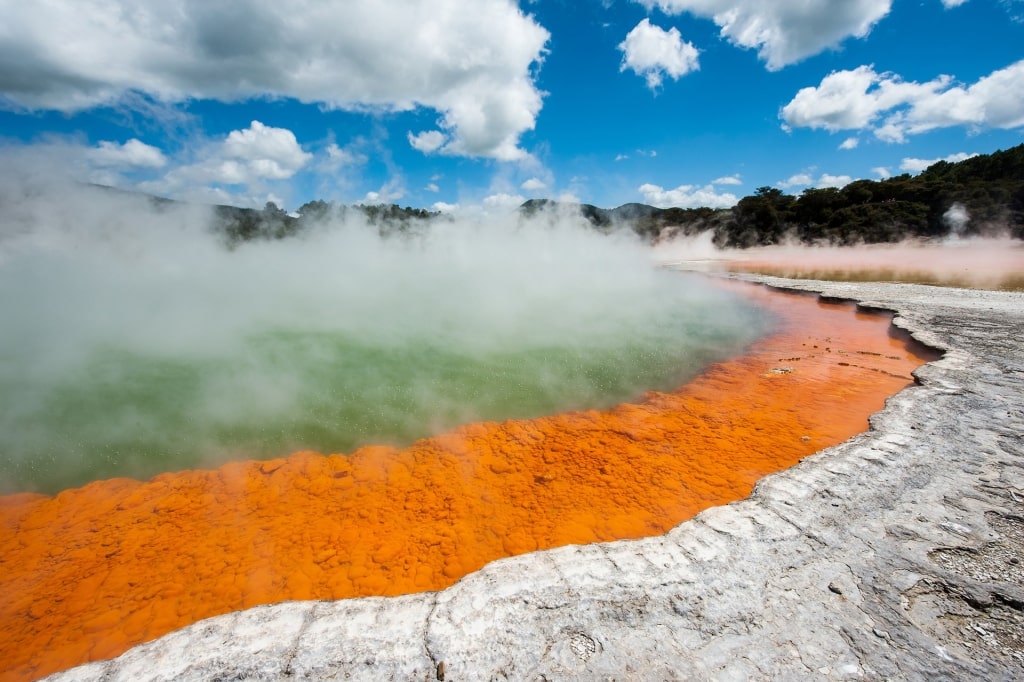
Frying Pan Lake, New Zealand
With its circular shape, and long “handle” of run-off into Hot Water Creek, it’s easy to see how Frying Pan Lake was named. The comparison is even stronger when you see the clouds of steam rising from the surface.
The lake reaches 140ºF at its hottest, making it much too dangerous for swimming. However, its setting and the fact it is the world’s largest hot spring makes it well worth seeing.
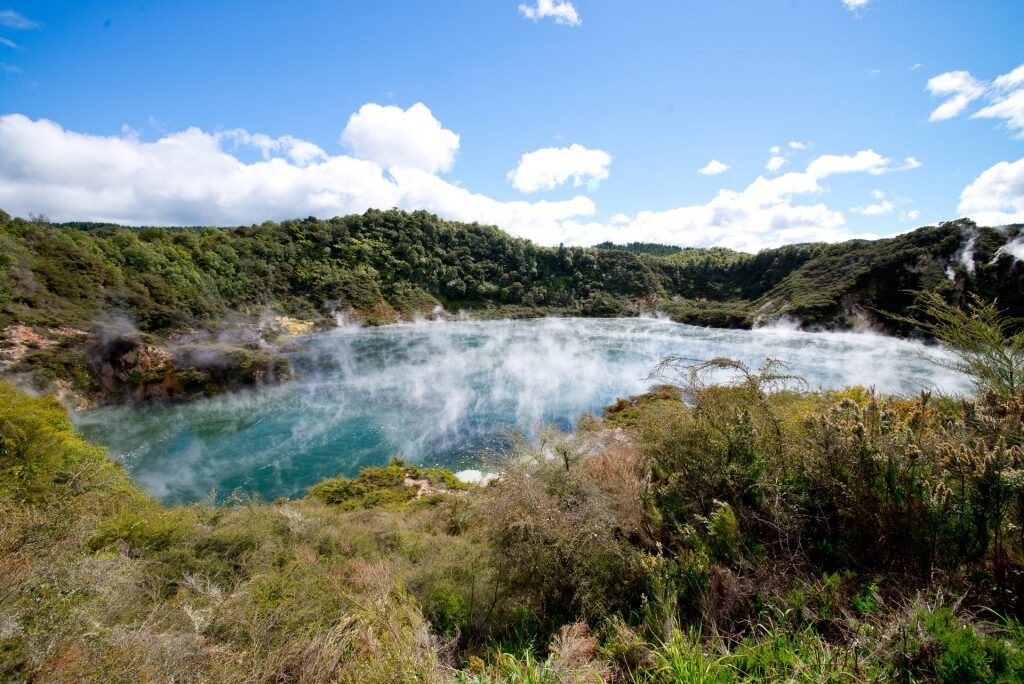
Frying Pan Lake, New Zealand
The lake sits among one of the distinctive rugged and dramatic landscapes that New Zealand is known for. Its steaming waters, surrounded by mountains and greenery, are a spectacular sight.
Despite the scale, Waimangu Cauldron (its proper name) is only some 20 feet deep but covers more than nine acres. This vast pan was formed as recently as 1886 by a volcanic eruption.
The water, while unsafe for humans, is home to thermophilic (“heat-loving”) microbes. These include archaea, single-celled organisms that are among the earth’s earliest forms of life.
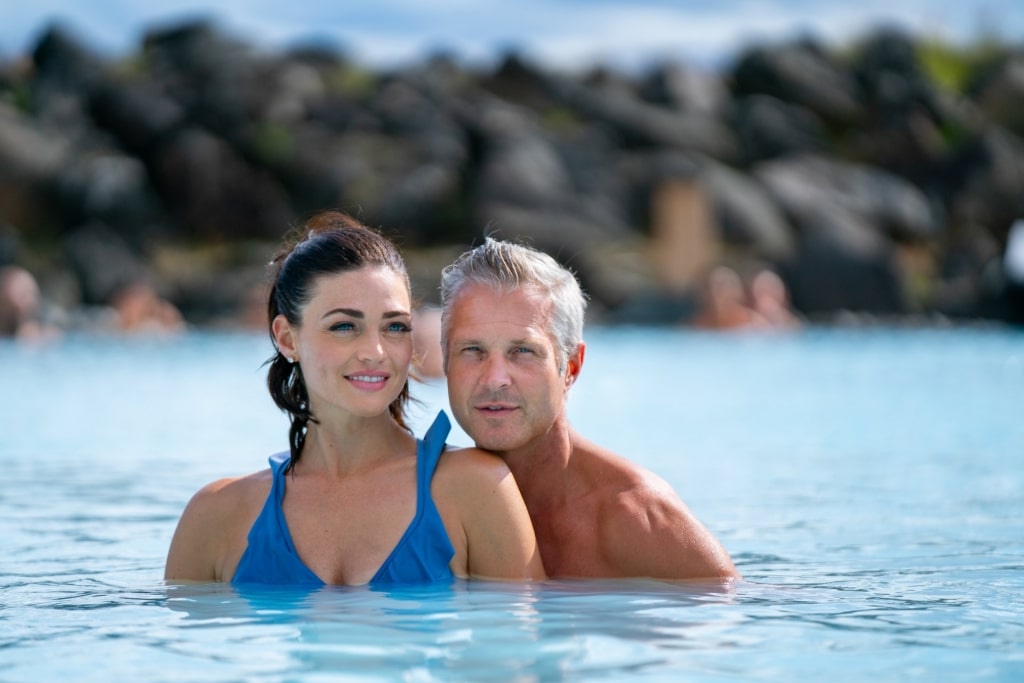
Mývatn Nature Baths, Iceland
Inspired to see some of the world’s most famous hot springs? Then browse Celebrity Cruises’ itineraries to visit these natural wonders.


